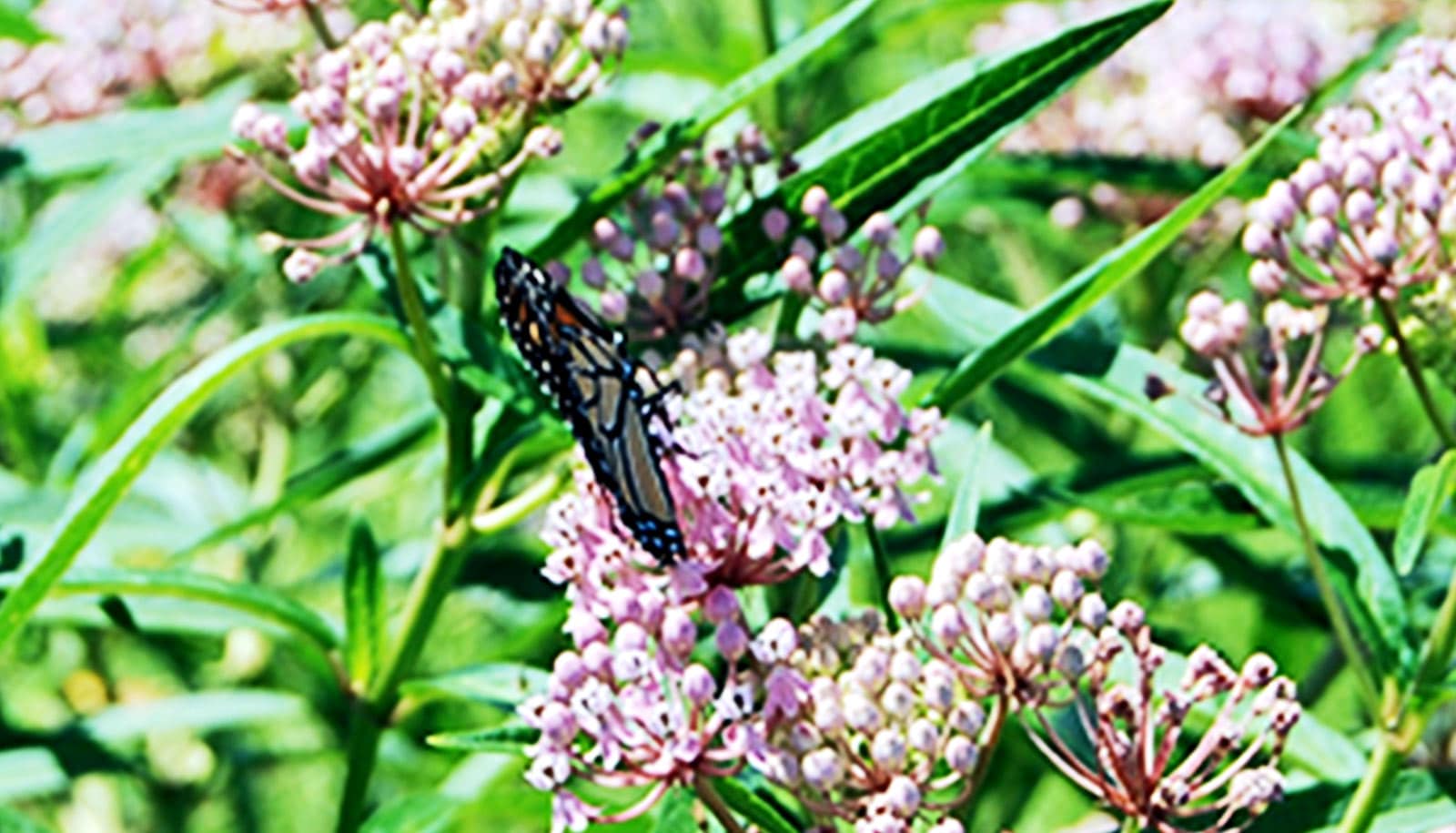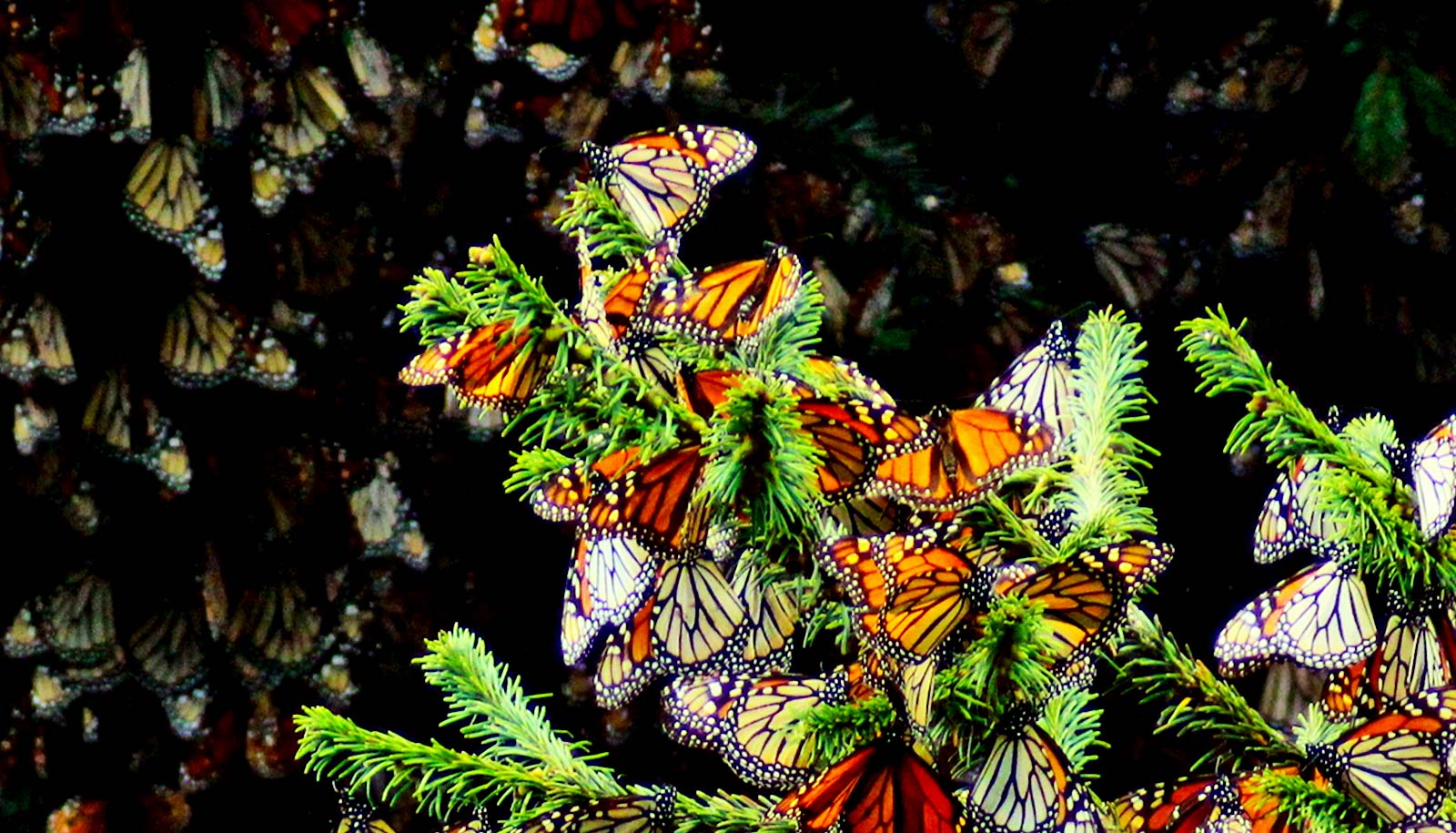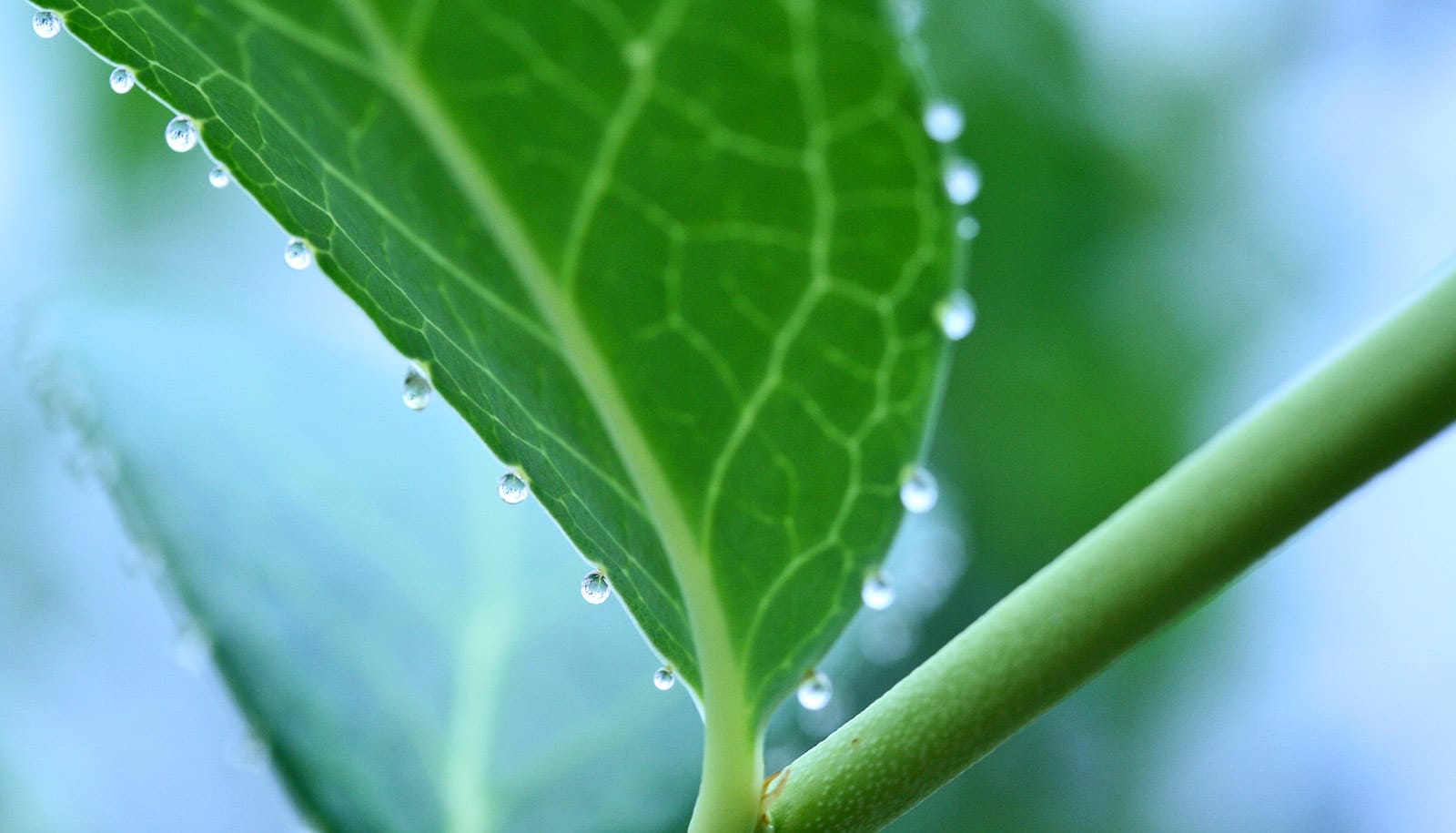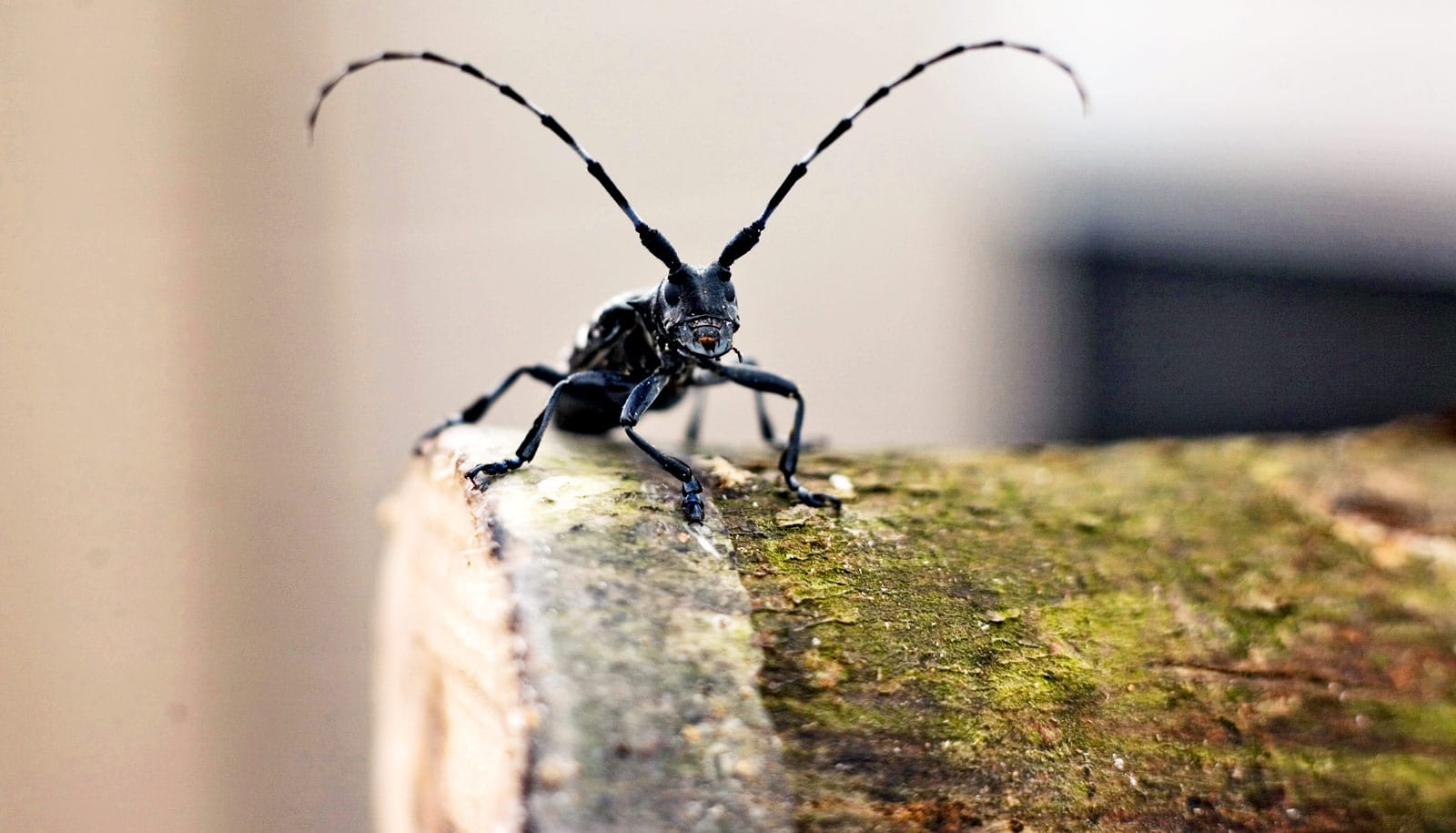A new study suggests mixing milkweed with other flowering plants may help migrating monarch butterflies more than milkweed alone.
As monarch butterflies make their transcontinental migration this month across North America, they will depend on milkweed plants to produce the next generation of this iconic butterfly species, which has seen declines of more than 80% in its eastern population and 99% in its western population.
The new study shows that monarch butterflies laid 22% more eggs on milkweed in plots with a mix of milkweed and other flowering plants than they did in plots with a single milkweed species.
“In general, we always try to promote the most diverse plantings as we can because this provides the greatest benefit for a variety of organisms,” says Adam Dale, an assistant professor in the entomology and nematology department at the University of Florida. “So, to see that we can do that and not have a negative consequence for monarchs was really encouraging.”
According to the researchers, most monarch conservation efforts have focused on planting milkweed because of its critical role in the insect’s life cycle: monarchs only lay their eggs on milkweed, and the caterpillars that emerge eat only milkweed.
However, monarchs need more than milkweed to perpetuate the species, the researchers say, and this may be why they are drawn to more diverse plantings.
“As adults, monarchs require nectar resources to refuel for flight and reproduction, so it makes sense that they would potentially colonize diverse wildflower plantings over plantings of just milkweed,” says Rebecca Nestle, who led the study as part of her master’s thesis in the entomology and nematology department and is now a biological science technician at the US Department of Agriculture Agricultural Research Service.
Conservation and beautification
Typically, greater plant variety favors predatory insects. Previous studies have shown this can result is less abundant plant-feeding insects. However, when the researchers compared the number of monarch caterpillars lost to predators in each type of planting, they found no difference.
This means that monarchs are no more vulnerable to their “natural enemies” in mixed plantings than they are in those with just milkweed.
Mixed plantings are not just attractive to monarchs, says coauthor Jaret Daniels, curator at the Florida Museum’s McGuire Center for Lepidoptera and Biodiversity.
“Let’s face it, milkweed is not the most aesthetically pleasing plant. However, a mix of colorful flowering plants and milkweed looks great. The results of this study show that conservation and beautification can go hand in hand,” says Daniels, who is also a professor in the entomology and nematology department.
Since swamp milkweed, the milkweed species used in the study, only blooms for part of the year, a mix of plants ensures that there is something pleasing to the eye year-round.
“This also ensures a continuous floral resource for other insects including monarchs. The mix of plants helps us maximize the ecological value of the plantings,” Dale says.
Monarchs, milkweed, and wildflowers
The study also provides guidance for larger scale plantings in urban green spaces, Daniels says. The findings have already influenced pollinator conservation work Daniels and his team are conducting in roadside retention basins with the Florida Department of Transportation.
“We retooled our design to diversify the plantings. We are taking what we’ve learned from this study and applying it right away in the field,” Daniels says.
To determine which kind of plantings monarchs preferred, the researchers established 24 6-by-4-meter plots of two experimental treatments at the University of Florida/Institute of Food and Agricultural Sciences (IFAS) Plant Science Research and Education Unit in Citra, Florida. One treatment had a mix of milkweed and other wildflowers, the other only milkweed.
Once a week during the study period, Nestle would count the monarch eggs attached to milkweed plants in each plot. Monarch eggs are about the size of a pinhead and must be counted by hand.
“On my own, it would take between 4 to 6 hours a day to count eggs—and I’m quick at it—and with help about 3 to 4 hours,” Nestle says.
Nestle’s dedication to the project comes from a life-long passion for monarch butterflies and insect conservation. She recalls being 10 years old and asking her mom to buy her milkweed so she could raise monarchs.
“I held onto that passion and used it to learn more about insects, pursing undergraduate and master’s degrees in entomology, hoping to use my education for conservation efforts,” she says.
As a scientist with USDA ARS, Nestle will study how to use insects to control Brazilian pepper tree and Chinese tallow, two invasive plants.
“I think it is a perfect way to include my passion of insects, plants, and conservation because our research is working to reduce these invasive species, minimizing herbicide use, and hopefully reduce the abundance of these species in natural habitats,” she says.
The study appears in the journal Insects.
Source: Samantha Murray for University of Florida



